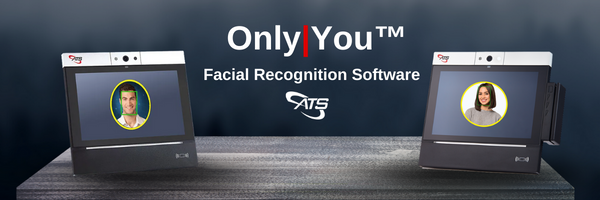 The next evolution in timekeeping is incorporating biometric facial recognition into ERP, WFM and HCM solutions. Demand is growing to use biometric systems for time tracking to improve payroll efficiency.
The next evolution in timekeeping is incorporating biometric facial recognition into ERP, WFM and HCM solutions. Demand is growing to use biometric systems for time tracking to improve payroll efficiency.
A facial recognition time clock helps companies that require an advanced time and attendance solution to run an accurate, cost-efficient payroll.
Accu-Time Systems offers a hardware and software solution that helps companies like yours move into this market quickly. We’ve enhanced our scalable attendance system to include a facial recognition time clock, making it one of the most advanced time clock solutions available.
The Challenges of Old Timekeeping Processes
The old process relies heavily on manual time tracking, which introduces errors and consumes valuable time from payroll administrators. This outdated method often results in discrepancies and delays in processing payroll, which sours employee relations.
They also make buddy punching easy, compromising accountability and accuracy, and inflating labor costs.
A biometric timekeeping solution that includes face recognition time clocks resolves all these issues. Facial recognition time clocks verify employee faces to prevent time theft and eliminate employee buddy punching. As a result, they provide more accurate attendance records with improved security.
The Rise of Facial Recognition Time Clock Technology
Facial recognition technology uses biometric algorithms to verify individuals based on their facial features.
Recent advances in facial recognition technology have improved accuracy by enhancing biometric algorithms to handle more detailed analysis of facial features. The newer technology also allows for faster processing. Fast processing and secure authentication are crucial at a biometric time clock to prevent delays for employees clocking in or out.

The Verification Process with a Facial Recognition Time Clock
Facial recognition works by comparing a pre-existing template, the one that the employee used to enroll on the clock, with a real time facial scan. ATS’s facial recognition time clock software, Only|You™ Face, uses a two-factor authentication process to that works like this:
- The employee identifies themself at the time clock using a PIN or other credential option.
- The Only|You Face software selects that template associated with that’s employee’s identification.
- The real time scan of the employee’s face is compared against the template.
- Once the scan and verified template match, the employee can use the time clock.
The two-factor authentication of the employee’s identity provides the maximum level of security, ensuring accurate attendance records and payroll data.
Benefits of Facial Recognition Time Clocks for HCM and ERP Companies
Using facial recognition time clocks in your system gives customers access to the newest time and attendance technology. Face recognition time clocks make payroll faster, reduce paperwork, and eliminate time theft.
#1 Enhance accuracy in Employee time tracking
With employees as their own secondary credential, the facial recognition system ensures precise and accurate attendance records. Accurate records mean accurate paychecks.
#2 Prevents fraudulent practices
A facial recognition time clock makes buddy punching virtually impossible, thereby saving your customers money. Time theft, especially through buddy punching, is a common practice that leaves companies overpaying for labor.
Discover the Benefits of a Facial Recognition Time Clock
By integrating a facial recognition time clock into your system, you can provide customers with a comprehensive solution that enhances payroll precision and productivity.
An attendance data collection system with a face recognition time clock can further enhance your system’s value, such as helping your customers improve attendance.
Learn more about our Only|You™ Face software and facial recognition time clocks here.




